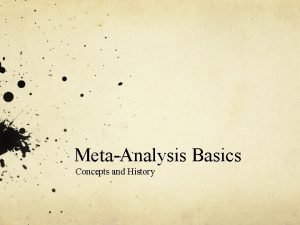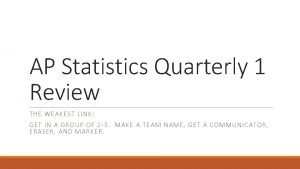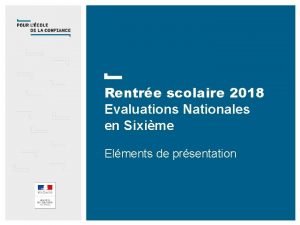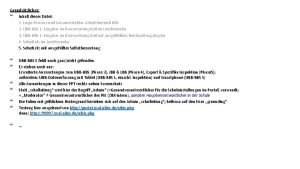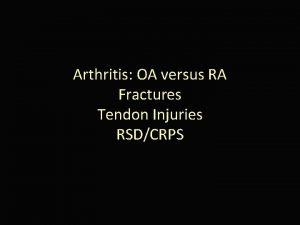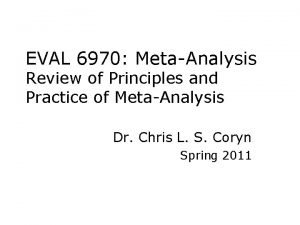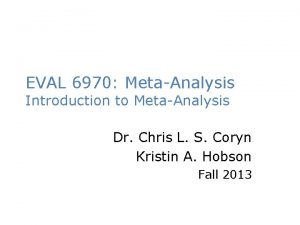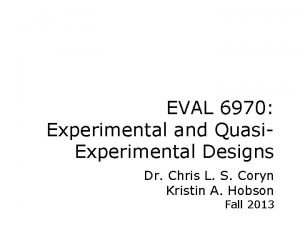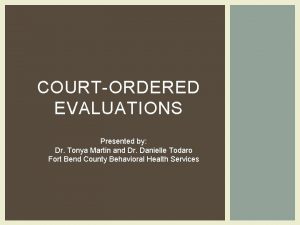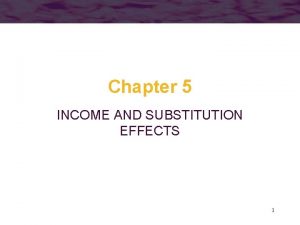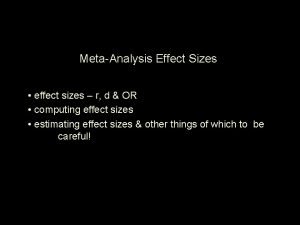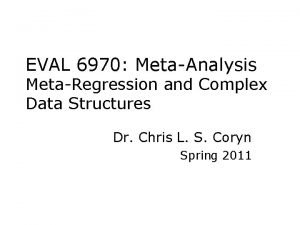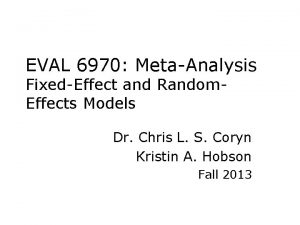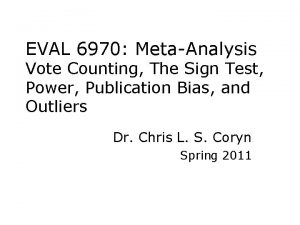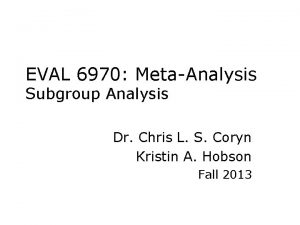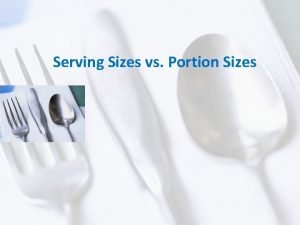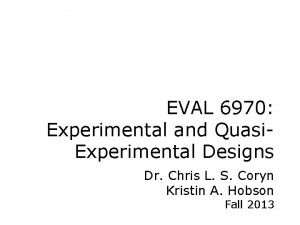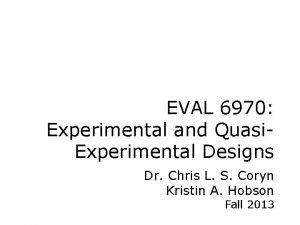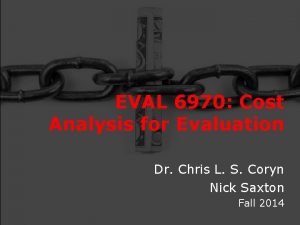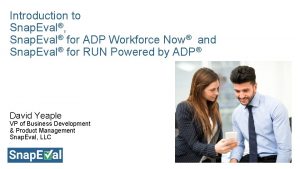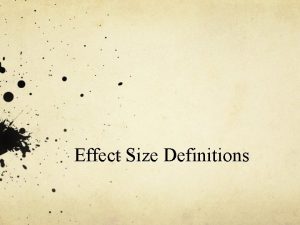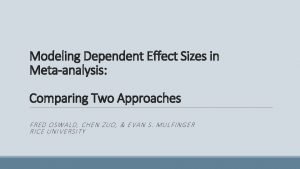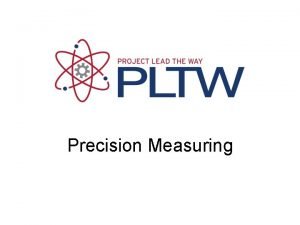EVAL 6970 MetaAnalysis Effect Sizes and Precision Part
























- Slides: 24

EVAL 6970: Meta-Analysis Effect Sizes and Precision: Part II Dr. Chris L. S. Coryn Kristin A. Hobson Fall 2013

Agenda • • • Effect sizes based on binary data Effect sizes based on correlations Converting among effect sizes Precision Review questions In-class activity

• Events Non-Events N Treated A B n 1 Control C D n 2

Risk Ratios • The risk ratio is the ratio of two risks where

Risk Ratios • For the purpose of meta-analysis, computations are conducted using a log scale where

Risk Ratios • With variance • And standard error

Odds Ratios • The odds ratio is the ratio of two odds where

Odds Ratios • For the purpose of meta-analysis, computations are conducted using a log scale where

Odds Ratios • With variance • And standard error

Risk Difference • The risk difference is the difference between two risks where • For risk differences all computations are performed on the raw units

Risk Difference • With variance • And standard error

Correlation Coefficient r •

Correlation Coefficient r • For meta-analyses, r is converted to Fisher’s z • The transformation of r to z is

Correlation Coefficient r • With variance • And standard error

Converting Among Effect Sizes • Often, different studies report different effect sizes (if at all) and for a meta-analysis all effect sizes need to be converted to a common index • Meta-Analysis 2. 0 will automate this process and many effect sizes calculators are also useful

Converting from Odds Ratio to d • To convert from the log odds ratio to d • With variance of

Converting from d to Odds Ratio • To convert from d to the log odds ratio • With variance of

Converting from r to d • To convert from r to d • With variance of

Converting from d to r •

Converting from d to r • With variance

Precision •

Confidence Intervals • Assuming that an effect size is normally distributed • And • 1. 96 is the Z-value corresponding to confidence limits of 95% (with error of 2. 5% at either end of the distribution)

Review Questions 1. When is it appropriate to use the risk ratio? 2. When is it appropriate to use the odds ratio? 3. When is it appropriate to use the risk difference? 4. When is it appropriate to use r? 5. What factors affect precision and how?

Today’s In-Class Activity • Individually, or in your working groups, download “Data Sets 1 -6 XLSX” from the course Website – Calculate the appropriate effects sizes, standard deviations, variances, and standard errors for Data Sets 5 and 6 – Calculate the 95% confidence intervals (i. e. , LL and UL) for Data Sets 1, 2, 3, 4, 5, and 6 – Be certain to save your work as we will use these data again
 What is metaanalysis
What is metaanalysis Comprehensive metaanalysis
Comprehensive metaanalysis Men's shirt sizes are determined by their neck sizes
Men's shirt sizes are determined by their neck sizes Non precision instruments are
Non precision instruments are Semiprecision attachment
Semiprecision attachment Bcd gösterimi
Bcd gösterimi Small effect size
Small effect size Eval.depp.taocloud.org
Eval.depp.taocloud.org Qualit eval
Qualit eval Bbs eval nibis
Bbs eval nibis Fitrep examples
Fitrep examples E4 evaluation examples
E4 evaluation examples Eval command
Eval command Initial eval
Initial eval Wveis ed eval
Wveis ed eval Block 40 chief eval
Block 40 chief eval Requestmidiaccess
Requestmidiaccess Dr eval
Dr eval Dr eval
Dr eval Dr eval
Dr eval Tonya insanity
Tonya insanity Chloride shift
Chloride shift Roy's identity
Roy's identity Burning calories part/gland and the effect
Burning calories part/gland and the effect Kinds of fish and shellfish for processing
Kinds of fish and shellfish for processing
